Looking to spruce up your yard to get it ready for some fun, outdoor living? You may have considered turf vs. artificial grass as a low-maintenance alternative to traditional lawns. Turf and artificial grass are synthetic grass products. They are made of manmade materials rather than organic plant matter. While both can be used in place of actual grass, which has to be seeded, mowed, and maintained, there are a few differences between turf and artificial grass. The best option for your situation will depend on what you are looking for, how much you want to spend, and ultimately, what looks and feels great.
Both turf and artificial grass have almost no maintenance. Unlike grass, these surfaces don’t need to be watered or mowed. They also don’t need pesticides or other treatments to stay looking great.
1. Cost
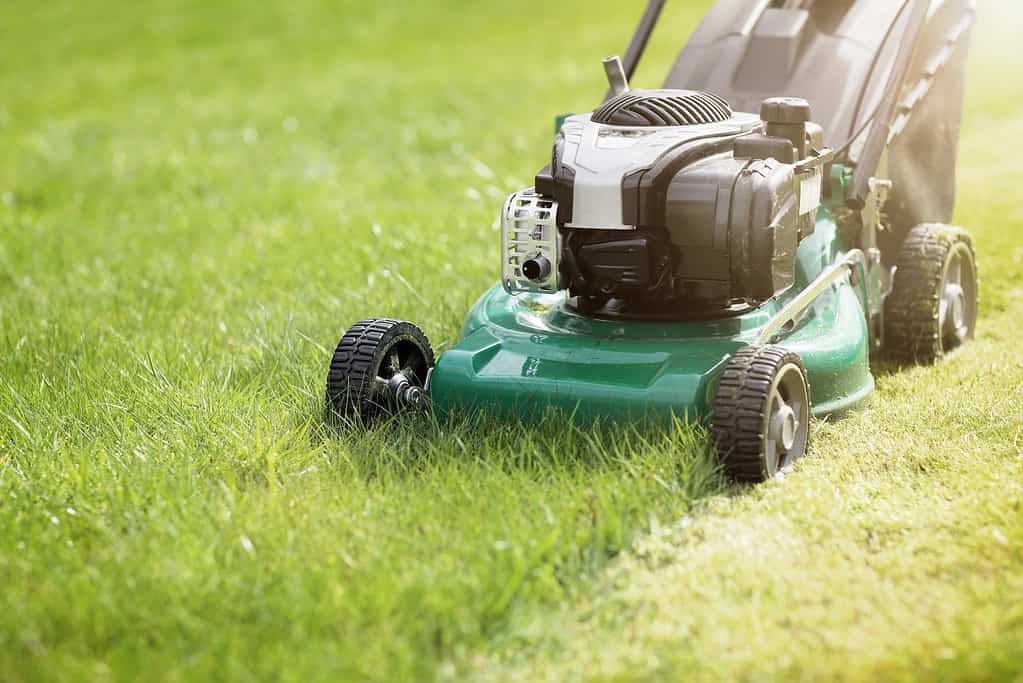
Artificial grass and turf do not need to be mowed like natural grass.
©BrianAJackson/iStock via Getty Images
One of the biggest factors for most people when installing turf or artificial grass is the expense. There’s no denying that both are more expensive than laying down traditional grass seed. Most of the costs of installing a synthetic grass area are paid up-front and include materials and labor. Whether you install turf or artificial grass, you’ll need to budget for installation, infill system, materials, and drainage. The costs will vary depending on how much preparation work needs to be done before installation, as well as what materials you choose for the field and the infill. Once you install your turf or artificial grass, the ongoing maintenance costs are pretty much the same.
2. Length
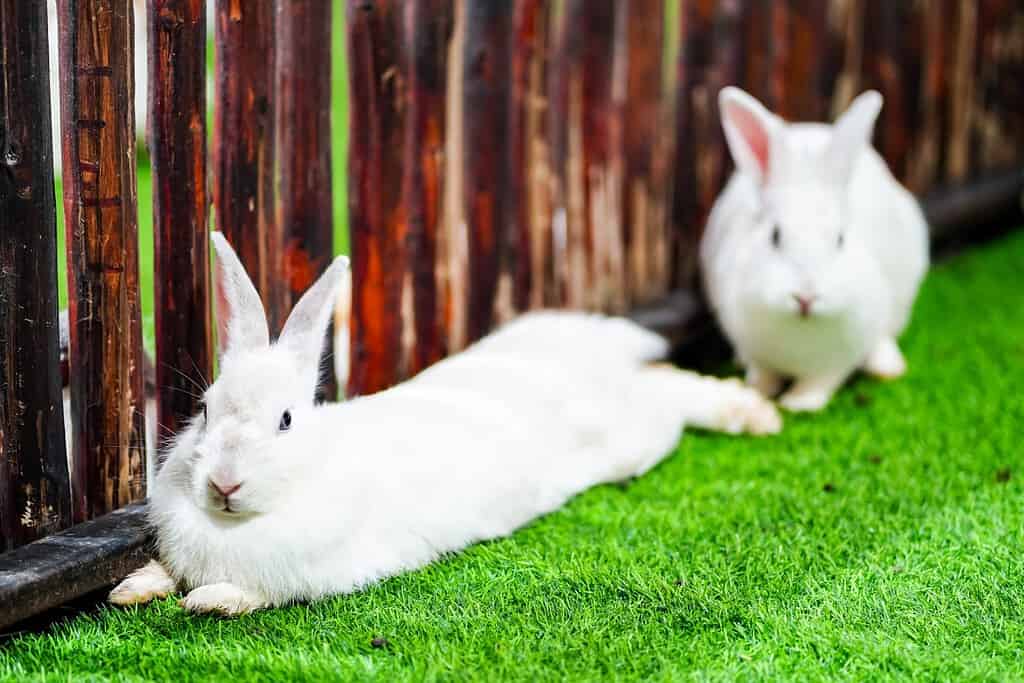
Both turf and artificial grass have a much more natural appearance than when they were first invented decades ago.
©ABWitzPix089/Shutterstock.com
Turf is shorter than artificial grass in most cases. It’s designed for function rather than to actually resemble grass. Artificial grass has longer pieces, making it look and feel more like actual grass.
Artificial grass is a woven mesh that is installed onto a system with filler to keep it in place and uniform. The filler is often silica sand or rubber, sometimes made of recycled materials. Turf also has an infill but has much shorter woven fibers making up the green “grass” portion. Turf can also use rubber or even sand as infill.
3. Look
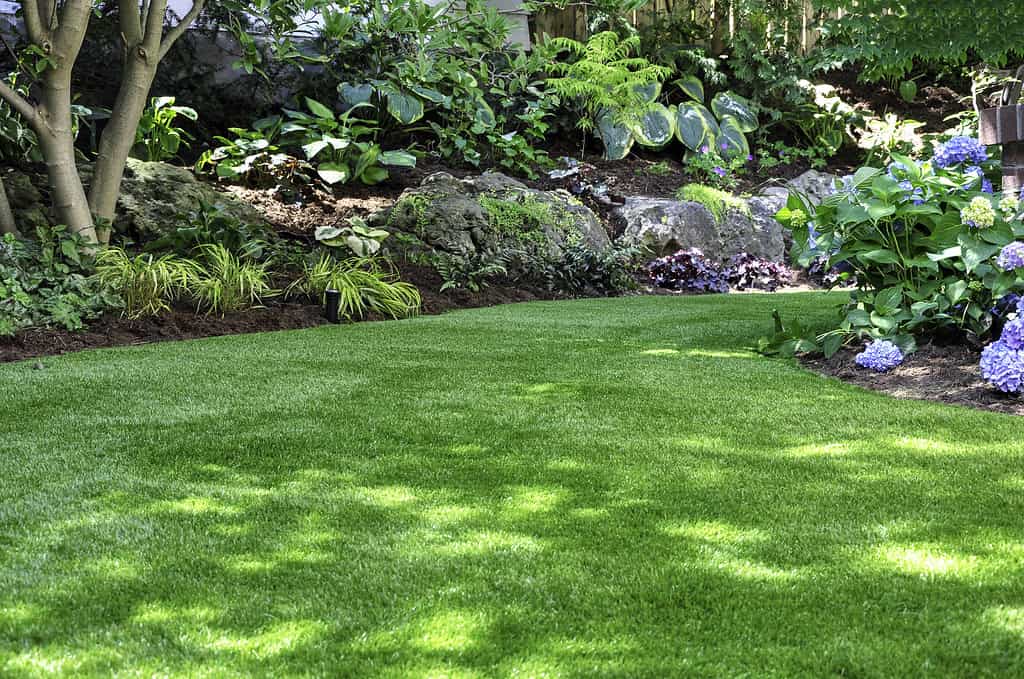
This beautiful backyard woodland garden features a maintenance-free lawn made of realistic-looking artificial grass, a huge landscaping trend for small spaces.
©Joanne Dale/iStock via Getty Images
The aesthetic appeal of artificial grass gives it an edge over turf in many scenarios. Residential lawns and commercial green spaces that want to have the same look as grass typically opt for artificial grass over turf. Functional spaces, like sports fields, usually go with turf. Turf definitely looks synthetic when compared to artificial grass. It has a more uniform appearance, which works in some situations. Artificial grass, however, includes a bit more variation and has longer, more grass-like pieces. Both are usually green but artificial grass can come in multiple shades, making it easier to blend into other natural grass in the area.
4. Use
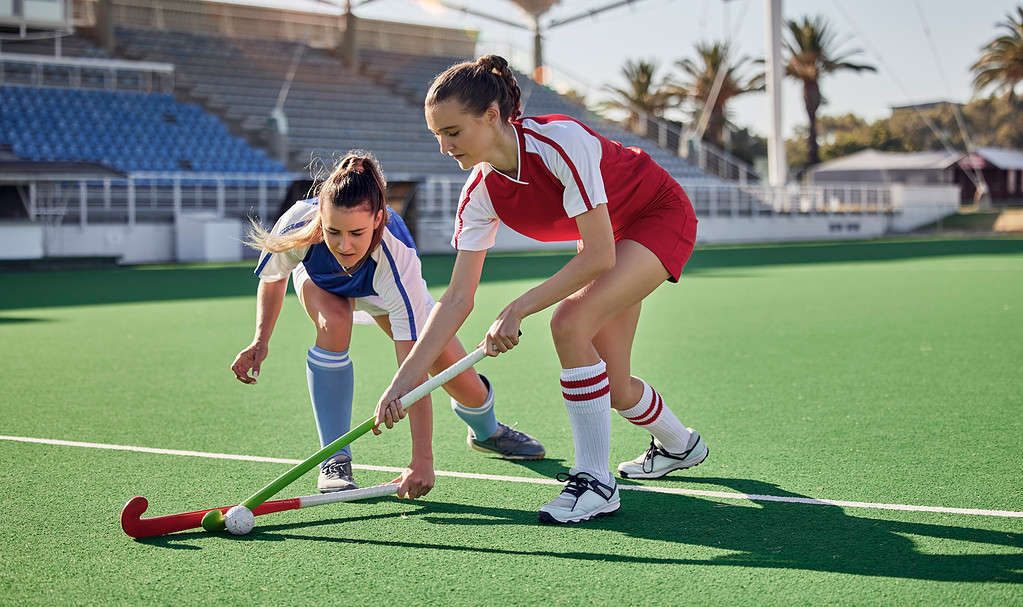
Turf is popular for sports fields, where it needs to hold up to a lot of foot traffic.
©People Images/ via Getty Images
Turf is generally used indoors for sports fields in place of grass when using real grass just doesn’t make sense. It is designed to hold up to people running, jumping, and playing on it. Turf tends to be tougher because of the way that it’s used. If you’ve ever seen a football team playing in a big stadium, chances are they were playing on turf.
Artificial grass, on the other hand, is a bit softer and a better replica of actual grass. It is popular for situations where looks are just as important as function. Yards that get less wear and tear, such as children’s playgrounds, doggy daycares, and even residential yards, are great places to put artificial grass.
5. Maintenance
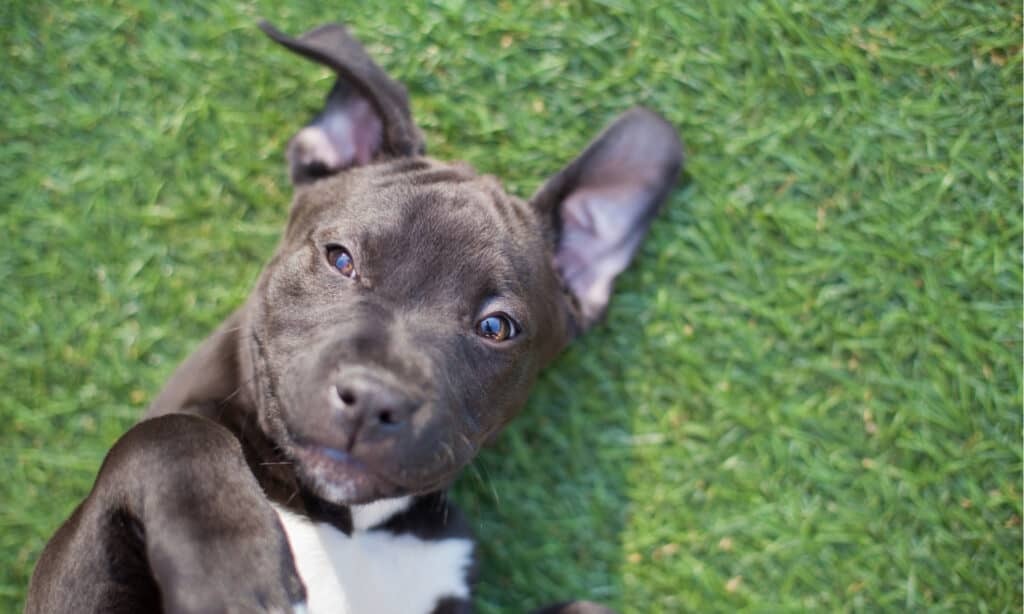
You’ll need to spot clean artificial grass or turf, especially if it is used by pets.
©Tara Lynn and Co/Shutterstock.com
Both turf and artificial grass are low maintenance. But that doesn’t mean zero maintenance, especially if you want to make your investment last for a long time. You should keep the surface clean to keep it in the best shape. Not only does this look nicer, but it also keeps the material from getting excess wear or damage. Spot cleaning is pretty easy, which is a big consideration if you’re using it in place of grass in your yard. Expect your pet to do their business on artificial grass just like they would on the real thing. Periodically, you may also need to replace or replenish the infill to get the best cushioning. With minimal maintenance, a synthetic grass field can last up to 20 years!
The photo featured at the top of this post is © imging/Shutterstock.com
Thank you for reading! Have some feedback for us? Contact the AZ Animals editorial team.







